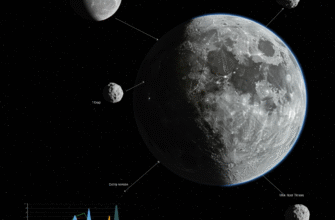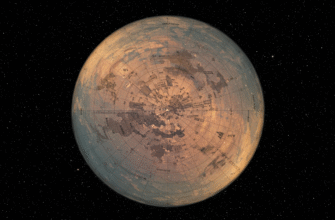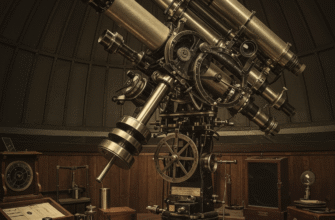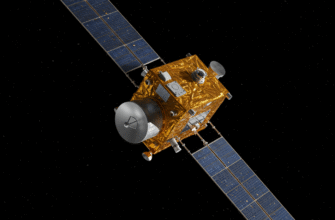Comets, those ethereal wanderers of our solar system, have captivated human imagination for millennia. Often dubbed “dirty snowballs” or, perhaps more accurately, “icy dirtballs,” these celestial bodies are ancient relics, frozen remnants from the solar system’s formation roughly 4.6 billion years ago. As such, they hold invaluable clues to the primordial conditions and materials that eventually gave rise to planets, including our own Earth. For a long time, however, the internal composition and structure of comets remained largely a matter of speculation, hidden beneath dusty, often dark, outer layers modified by eons of solar radiation and outgassing. Scientists yearned to peek beneath this cosmic veil.
To address this fundamental gap in our understanding, NASA embarked on an ambitious and aptly named mission: Deep Impact. The core idea was daringly straightforward yet technologically complex: to intentionally crash a projectile into a comet and meticulously study the resulting crater and the plume of excavated material. This wasn’t merely an exercise in celestial target practice; it was a carefully orchestrated experiment designed to unearth pristine material from a comet’s interior, material that had been shielded from the harsh space environment for billions of years. The chosen target for this cosmic collision was Comet 9P/Tempel 1, a Jupiter-family comet with a period of about 5.5 years, making its orbit relatively predictable and accessible.
The Intrepid Duo: Flyby and Impactor
The Deep Impact mission was a two-part ensemble, consisting of a larger “flyby” spacecraft and a smaller, but critically important, “impactor”. The flyby spacecraft served as the mother ship, the brains, and the primary observation platform. It was equipped with a suite of sophisticated instruments, including a High Resolution Imager (HRI), a Medium Resolution Imager (MRI), and an infrared spectrometer. These tools were designed to capture detailed images and analyze the composition of Comet Tempel 1 both before and, crucially, after the impactor made its mark. The HRI, in particular, was a powerful telescope capable of resolving features on the comet’s surface and in the ejecta plume.
The impactor, on the other hand, was a more specialized, almost kamikaze, probe. Weighing approximately 372 kilograms (820 pounds) and roughly the size of a small washing machine, it was ingeniously designed for its singular, destructive purpose. A significant portion of its mass, about 113 kg, was copper. Copper was chosen because it is not expected to be abundant in comets, making it easier to distinguish from cometary material in spectroscopic analyses of the impact ejecta. The impactor also carried its own camera, the Impactor Targeting Sensor (ITS), which relayed images of Tempel 1’s surface back to the flyby spacecraft and Earth as it homed in on its target, providing an ever-closer view right up to the final moments.
A Collision Course Set Billions of Miles Away
Launched from Cape Canaveral, Florida, on January 12, 2005, aboard a Delta II rocket, the Deep Impact spacecraft began its 172-day, 431-million-kilometer (268-million-mile) journey to intercept Comet Tempel 1. The cruise phase was not merely a passive drift through space; it involved precise navigation and several trajectory correction maneuvers to ensure the spacecraft would arrive at the right place, at the right time, for its encounter. As Deep Impact neared its target in June and early July 2005, its instruments were already hard at work, imaging Tempel 1 to characterize its size, shape, rotation, and surface features, and to help select the optimal impact location.
The tension mounted on July 3, 2005, approximately 24 hours before the planned impact. The flyby spacecraft successfully released the impactor, setting it on its terminal trajectory towards the comet. This separation was a critical juncture. The impactor, now operating independently, used its autonomous navigation system and small thrusters to make final, fine adjustments to its path, aiming for a sunlit, relatively flat area on the comet. Its camera continuously captured images, providing an unprecedented close-up perspective of a cometary nucleus, revealing features like smooth areas, ridges, and depressions.
The Moment of Impact: A Celestial Revelation
On July 4, 2005 – a fitting date for such an explosive event, coinciding with U.S. Independence Day – the world watched, metaphorically speaking. At 05:52 UTC (1:52 a.m. EDT), the copper-fortified impactor, traveling at a phenomenal relative velocity of about 37,000 kilometers per hour (23,000 miles per hour), slammed into the nucleus of Comet Tempel 1. The collision unleashed a brilliant flash of light, dramatically increasing the comet’s brightness as seen from Earth. This flash was followed by the rapid expansion of a V-shaped plume of gas and fine dust, blasted from the newly formed crater.
The flyby spacecraft, having maneuvered to a safe observation distance of about 500 kilometers (310 miles), had a ringside seat. Its instruments were poised to record the impact and its immediate aftermath. For about 14 crucial minutes following the collision, it flew through the outskirts of the ejecta cloud, capturing high-resolution images of the impact site and the expanding plume, and analyzing the composition of the liberated material with its spectrometer. This short window of observation was critical for understanding the nature of the material excavated from beneath Tempel 1’s surface. Observatories around the globe and in space, including the Hubble Space Telescope, Spitzer Space Telescope, and Chandra X-ray Observatory, also turned their gaze towards Tempel 1, contributing to a multi-faceted study of the event.
First Glimpses Under the Crust
The initial data returned by Deep Impact was nothing short of spectacular and, in some ways, surprising. One of the most striking early findings was the sheer volume of fine, powdery dust ejected from the comet. This indicated that the surface layers of Tempel 1 were incredibly weak, fragile, and porous – more akin to a loosely packed pile of talcum powder or freshly fallen snow than a solid, icy rock. The plume of material was much brighter and contained more dust than many scientists had anticipated, suggesting a higher dust-to-ice ratio in the excavated layers than perhaps expected from a “dirty snowball.”
The infrared spectrometer on the flyby spacecraft detected a fascinating array of substances within the ejecta. As anticipated, water ice was present, but it appeared to be buried beneath a layer of dust. Also found were carbon dioxide ice, organic compounds (including complex molecules like polycyclic aromatic hydrocarbons or PAHs, and methyl cyanide), silicates (the building blocks of rock), clays, and even carbonates. The detection of carbonates was particularly noteworthy, as these minerals typically form in the presence of liquid water, hinting at potentially more complex chemical processes or aqueous alteration within the comet or its parent bodies in the early solar system.
The Deep Impact mission achieved its primary goal by successfully excavating material from beneath the surface of Comet Tempel 1. This pioneering event provided the first direct insight into the internal composition and structure of a cometary nucleus. The data revealed that the comet’s upper layers are remarkably fine, powdery, and far less dense than previously imagined. These findings have fundamentally altered scientific understanding of how comets are constructed.
Rethinking Comets: Porosity, Composition, and Origins
The wealth of data from Deep Impact spurred a significant re-evaluation of cometary models. The mission confirmed that Comet Tempel 1 is an extremely porous object, with a very low overall density – possibly less than that of water, meaning it would float. This strongly supports the “rubble pile” model for comets, suggesting they are not monolithic bodies but rather loose agglomerations of smaller icy and dusty chunks, held together weakly by gravity. This structure is a consequence of their formation through the gentle accretion of materials in the cold, outer regions of the protoplanetary disk.
The crater formed by the impactor was estimated to be between 100 and 250 meters (about 330 to 820 feet) in diameter and perhaps 30 meters (100 feet) deep. Directly imaging the final crater proved difficult due to the lingering ejecta cloud and the crater’s eventual collapse or infilling, but the scale of the excavation further underscored the weakness of the comet’s surface material. The unexpectedly large amount of fine dust liberated, and its behavior, suggested that the particles were not strongly cemented together.
Unlocking Secrets of the Early Solar System
The composition of the material blasted from Tempel 1’s interior offered a window into the chemistry of the early solar system. The diverse mix of ices (water, carbon dioxide), dust (silicates, clays), and a surprisingly rich inventory of organic compounds provided tangible evidence of the raw ingredients available during planet formation. The presence of these organics is particularly significant, as cometary impacts on the early Earth are hypothesized to have delivered water and crucial organic molecules, potentially contributing to the origin of life. Deep Impact’s findings bolstered this theory by confirming the complex organic chemistry within comets.
One of the more subtle but important discoveries was the relative scarcity of exposed water ice on the immediate surface hit by the impactor; much of the water ice detected seemed to come from slightly deeper within the excavated material. This supported the idea that cometary surfaces develop a desiccated, dusty mantle or crust as volatile ices sublimate away due to repeated passes near the Sun, leaving behind a lag deposit of non-volatile dust. The impactor effectively punched through this outer layer to reveal the more pristine, ice-rich material below.
A Legacy of Discovery and Unexpected Turns
The Deep Impact mission was remarkable not only for what it found but also for how it advanced our capabilities in planetary exploration. It demonstrated the feasibility of an autonomous impactor targeting a small celestial body at high speed, a technique that could be valuable for future missions, including those related to planetary defense (though Deep Impact itself was purely a science mission).
Beyond its primary objectives at Tempel 1, the Deep Impact flyby spacecraft proved to be a resilient explorer. After successfully completing its cometary encounter, the spacecraft was still healthy and had remaining fuel. This led to its repurposing for an extended mission dubbed EPOXI (Extrasolar Planet Observation and Deep Impact Extended Investigation). Under the EPOXI banner, the spacecraft went on to perform observations of extrasolar planets and, in a remarkable second act, flew by another comet, Hartley 2, in November 2010. This encounter provided a valuable comparative study, revealing that Hartley 2 was quite different from Tempel 1 – smaller, more active, and with a distinct peanut shape. The diversity observed between these two comets highlighted that not all “dirty snowballs” are alike.
Paving the Way for Future Exploration
Deep Impact’s findings profoundly influenced the planning and interpretation of subsequent cometary missions, most notably the European Space Agency’s Rosetta mission, which orbited and landed a probe on Comet 67P/Churyumov–Gerasimenko. The porous, low-density nature of comets, first directly probed by Deep Impact, was found to be a characteristic shared by 67P. The mission effectively “opened up” comets, transitioning from remote observation to direct, physical interaction and subsurface analysis.
The mission also underscored the dynamic and evolving nature of comets. The observations suggested possible layering within Tempel 1, hinting at a complex accretion history or episodic outgassing events that shaped its internal structure over time. The fine dust, which behaved almost like a fluid upon ejection, presented new challenges for understanding cometary physics.
In summary, NASA’s Deep Impact mission was a triumph of engineering and a watershed moment for cometary science. By daring to excavate a piece of Comet Tempel 1, scientists gained unprecedented access to the ancient materials preserved within its icy heart. The mission revealed comets to be far more fragile, dusty, and structurally complex than previously understood from afar. It provided compelling evidence about the composition of the early solar system and the potential role of comets in delivering life’s essential ingredients to Earth. The echoes of Deep Impact continue to resonate, shaping our ongoing quest to understand these enigmatic and beautiful travelers from the dawn of our solar system.









